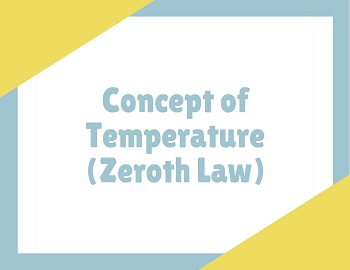Table of Contents
Discovery of Electron Proton Neutron:
Electric Discharge Through Gases:
When an electric discharge is passed between two electrodes (by applying a potential of 10,000 volts or more) sealed in a glass tube (discharge tube) containing air at a very low pressure of 1 mm Hg, the electricity flows and the air between the electrodes begins to glow. Now if the air is replaced by any other gas, the glow still persists but its colour is different for different gases. It is reddish for air, orange-red for neon, bluish violet for hydrogen etc. On further lowering the pressure, the glow in the gas column changes both in form and intensity. When the pressure becomes 0.001 mm Hg, the glow in the tube disappears and instead of the glass tube at the end opposite to the cathode begins to glow with a greenish or bluish light depending on the type of the glass of which the tube is made.

Cathode Rays- Discovery of Electron:
When the gas pressure in the discharge tube is reduced to 0.001 mm Hg and the electric discharge is passed between the electrodes, the glass tube at the end opposite to the cathode starts glowing and emits greenish or bluish light. This emission of light is now believed to be due to some invisible rays coming from the cathode and striking the glass tube. These rays originating at the cathode and flowing towards the anode are known as cathode rays.

Properties of Cathode Rays:
Cathode Rays have the following properties.
- They move with high speed from the cathode towards the anode.
- They cast a shadow of an opaque body placed in their path on the end wall of the tube farthest from the cathode, indicating that a beam of cathode rays moves in a straight line from the cathode towards the anode.
- They cause the rotation of a small paddle wheel placed in their path suggesting them a beam of material particles which have mass and kinetic energy.
- They heat a metal foil placed between the electrodes and, thus, possess a heating effect.
- They are deflected from their path by an electric or magnetic field in the manner of a stream of negatively charged particles.
- They cause ionisation in gases.
- They can produce chemical changes. For example- silver salts change colour when hit by the cathode rays.
- They cause the production of X-rays when they impinge on solid objects.
- Their nature is independent of the material of the cathode and the type of gas in the discharge tube.
The properties of cathode rays indicate that they are formed of negatively charged particles. These particles have been named electrons. Experiments have shown that the mass of an electron is about 1/1837 of that of the hydrogen atom and is recognised as 9.1091 x 10-28 gram. The electron carries a charge of magnitude 1.602 x 10-19 coulombs, which is referred to as unit charge. The ratio of the charge ‘e‘ to the mass ‘m‘ of the electrons, e/m, is always the same, irrespective of the nature of the gas in the discharge tube and the material of the cathode. This is about 1.76 x 108 coulombs per gram. Electrons can be had from all forms of matter under the influence of X-rays. Thus, the electrons are the essential constituents of all atoms.
Positive Rays- Discovery of Protons:
Since the atom as a whole is electrically neutral it must have the same number of positively charged particles as the number of electrons in it.
In 1886, E. Goldstein performed experiments with the discharge tube having the perforated cathode and found a stream of rays passing through the holes in the cathode. These rays, travelling in a direction opposite to the cathode rays, carry a positive charge and were called positive rays or anode rays (initially called, canal rays).

Properties of Positive Rays:
The properties of positive rays were investigated by Sir J.J.Thomson and are mentioned below-
- They are deflected by electric and magnetic fields but the direction of their deflection is opposite to that of cathode rays. Thus, they consist of positively charged particles.
- Unlike electrons, the particles constituting these rays are not identical in all the cases. The charge and mass of these particles depend on the nature of the gas present in the discharge tube.
- The mass of the particles constituting these rays is practically the same as that of the atoms from which they are produced and is found to be about the same as atomic weight of the gas in the discharge tube.
The properties of positive rays show that they are formed of positively charged particles which are considered to be formed from the neutral atoms of the gas, present in the discharge tube, by the loss of electrons. The e/m values of the positively charged particles were determined by taking different gases in the discharge tube and these were found to be different for different gases. The e/m value for hydrogen ion, the lightest positively charged particle- detected when the discharge tube contained hydrogen gas, was the largest that Thomson found for any of the positively charged particles. It is now believed that the positively charged particle produced by hydrogen is one of the fundamental particles of matter. It has a charge equal in magnitude to the charge on the electron but opposite in sign. Its mass is about the same as that of a hydrogen atom and is regarded as a hydrogen atom that has lost its electron. This positively charged particle is known as a proton. A proton may be defined as a particle of unit mass and unit positive charge.
The Neutron:
In 1920, Rutherford suggested the probable existence of a particle, neutral in charge and having mass about the same as that of a proton. He named this particle as a neutron. The discovery of neutron was reported by J. Chadwick in 1932. He discovered this particle while bombarding beryllium with fast-moving alpha particles. The mass of a neutron is 1.675 x 10-24 gram, which is 1839 times the mass of an electron. It bears no electric charge and hence neutral.
- Important Warm and Cold Winds
- Cloud Formation And Types of Clouds
- Ecosystem
- Ecological Pyramids and its Types
- Ecological Succession or Biotic Succession
- Important Biogeochemical Cycles
- Global Warming: Effects and Control Measures
- Disaster Management
- Physiography Of India
- Rivers of India
- Seasonal Rhythm Of Indian Monsoon
- Forest and Wildlife Resources
- Geography Of India By Nitin Sangwan









Comments (No)